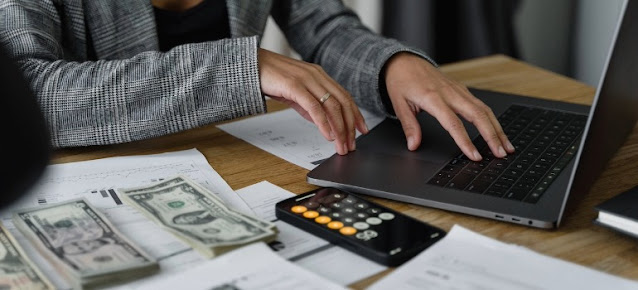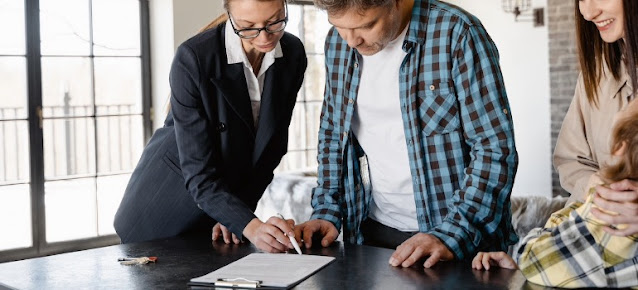Guest Author: Kathrine Griffith
The real estate industry is experiencing significant change, primarily driven by the rise of sustainable real estate. Mounting environmental concerns, increased energy costs, and a knowledgeable consumer base influence this change. Green homes, once considered niche, are now becoming the new standard. Urban growth and the pressing need to address climate change are shaping the housing market's direction, paving the way for the future of sustainable real estate. Architects and developers are increasingly incorporating energy-efficient designs and sustainable materials. This focus on sustainability aims to lessen environmental impact and promises healthier living conditions, cost savings, and a sustainable future for upcoming generations.
The Evolution of Sustainable Buildings
The concept of sustainable buildings has seen significant evolution over the decades. In the early days, sustainable practices were considered novel, often limited to a few experimental designs. Today, they have moved to the forefront of architectural and construction approaches. Traditional materials and energy-wasteful designs gradually give way to innovative solutions prioritizing eco-friendliness. This shift can be seen in integrating energy-efficient windows, insulation that minimizes energy loss, incorporating renewable energy sources, and choosing locally sourced, sustainable building materials. Additionally, the design philosophy itself has evolved. Modern sustainable buildings focus on reducing their environmental impact and emphasize creating healthier living spaces for occupants.
Why Sustainability in Real Estate is More Than Just a Trend
Sustainability in real estate has become a mainstay, far from being a fleeting trend. Several compelling reasons underline this permanence. At the forefront are the escalating environmental challenges our planet confronts, from climate change to resource depletion. Sustainable real estate offers tangible solutions to mitigate some of these pressing issues. For individuals buying a home today, the appeal goes beyond environmental considerations. Financially, green homes often lead to substantial long-term savings due to reduced energy and water consumption.
Furthermore, the demand for such homes is growing, which means better resale value and appeal to future buyers. Beyond the fiscal aspects, there's the undeniable health advantage. Sustainable homes provide better indoor air quality and natural lighting and use less harmful materials, ensuring a healthier living environment.
 |
| One aspect of the future of sustainable real estate that simply can’t be overlooked is the financial benefits for homeowners. |
The Global Shift and The Role of Policy
The global momentum toward sustainability in real estate is undeniable. While influenced by market dynamics and consumer preferences, this shift is also significantly shaped by policy interventions at various levels. Governments worldwide acknowledge the environmental, social, and economic imperatives of sustainable construction and are enacting legislation to promote it. Building codes and regulations in many regions now mandate certain green standards, ensuring that new constructions meet minimum environmental criteria.
Additionally, green certifications, ranging from energy efficiency ratings to comprehensive sustainability badges, provide clear benchmarks for properties. These certifications influence property value and offer a standardized metric for potential buyers and investors. These incentives also influence local real estate markets, with more people opting to move to a country or state with better sustainability standards. For example, there’s a noticeable trend of people relocating from Florida to Texas, seeing as the latter is perceived to be more eco-friendly.
Green Building Innovations to Watch Out For
As the push for sustainable living continues, green building innovations have surged to the forefront of the real estate industry. These advancements are not just about creating eco-friendly homes but also about redefining the way we experience and interact with our living spaces. One prime example is the integration of renewable energy sources, turning traditional homes into self-sustaining habitats. Technological advancements also pave the way for smarter homes that automatically manage energy consumption, optimizing efficiency. Furthermore, virtual home tours increasingly showcase these green innovations, allowing potential buyers to experience and understand the benefits remotely. Water conservation systems, for instance, are now more sophisticated, ranging from rainwater harvesting to greywater recycling. As we venture further into the future of sustainable real estate, these innovations are enhancing our homes and ensuring they align with global sustainability goals.
 |
| Rooftop solar panels are currently the most popular option for innovations in residential sustainability. |
What the Future of Sustainable Real Estate Means for Homeowners
For homeowners, the benefits of sustainable properties stretch far beyond the initial appeal of green living. A clear value proposition emerges when one dives deeper into these homes' financial and quality-of-life enhancements. Firstly, they provide tangible cost savings through decreased utility bills from efficient energy and water use. Over the lifespan of a home, these savings can accumulate significantly. Additionally, as market demand shifts towards eco-conscious living, homes with sustainable features often command higher market prices. Homeowners realize that maximizing resale value through renovations often means integrating sustainable elements, such as solar panels, energy-efficient appliances, or eco-friendly insulation. Beyond the economic aspects, the undeniable comfort of residing in a healthier environment, free from harmful toxins and with improved air quality.
Investment Opportunities and Returns for Real Estate Investors
Real estate investment is witnessing a paradigm shift, with sustainable properties emerging as lucrative assets. The increasing demand for eco-friendly homes has set a clear trajectory for higher rental yields and appreciations in property value. Recognizing these trends, investors are now keenly eyeing sustainable real estate opportunities. There is also an evident preference for green homes, indicating a robust market potential. Additionally, governments support this sustainable drive by offering tax benefits and incentives to investors prioritizing eco-friendly properties. Beyond the immediate financial gains, the long-term prospects are also promising. Green buildings tend to incur fewer maintenance costs, thanks to the durable and sustainable materials they employ, further boosting investor returns.
 |
| The potential for higher returns on investing in real estate with implemented sustainability opportunities is an alluring factor for many investors. |
Final Thoughts
The trajectory of the real estate sector toward sustainability is both evident and imperative. As we assess the future of sustainable real estate, it's clear that it's not merely a fleeting trend but rather a long-term, essential direction for the industry. This shift is driven by many factors, from environmental concerns to market demands and policy directions. As homeowners, investors, and stakeholders in our global environment, it's vital to recognize and champion this evolution. Embracing sustainable practices now offers multifaceted benefits, from tangible financial gains and improved living conditions to environmental preservation's broader, invaluable impact. As society grapples with climate change and resource depletion challenges, sustainable real estate emerges as a key component in building a resilient, eco-friendly future. Our collective choices and actions today will shape the sustainable landscapes of tomorrow.
Author’s Bio
Kathrine Griffith is a freelance writer at AmeriSafe Moving Services and a real estate enthusiast. She enjoys spending time with her family and reading romance novels in her free time.
Photos used:
https://www.pexels.com/photo/a-real-estate-agent-discussing-a-document-to-a-man-7415057/ - featured image
https://unsplash.com/photos/lCPhGxs7pww - picture 1
https://unsplash.com/photos/mIlvCv21W1s - picture 2
https://www.pexels.com/photo/a-woman-in-plaid-blazer-using-her-laptop-6693661/ - picture 3
